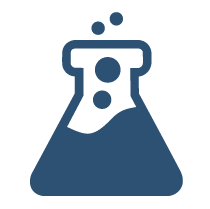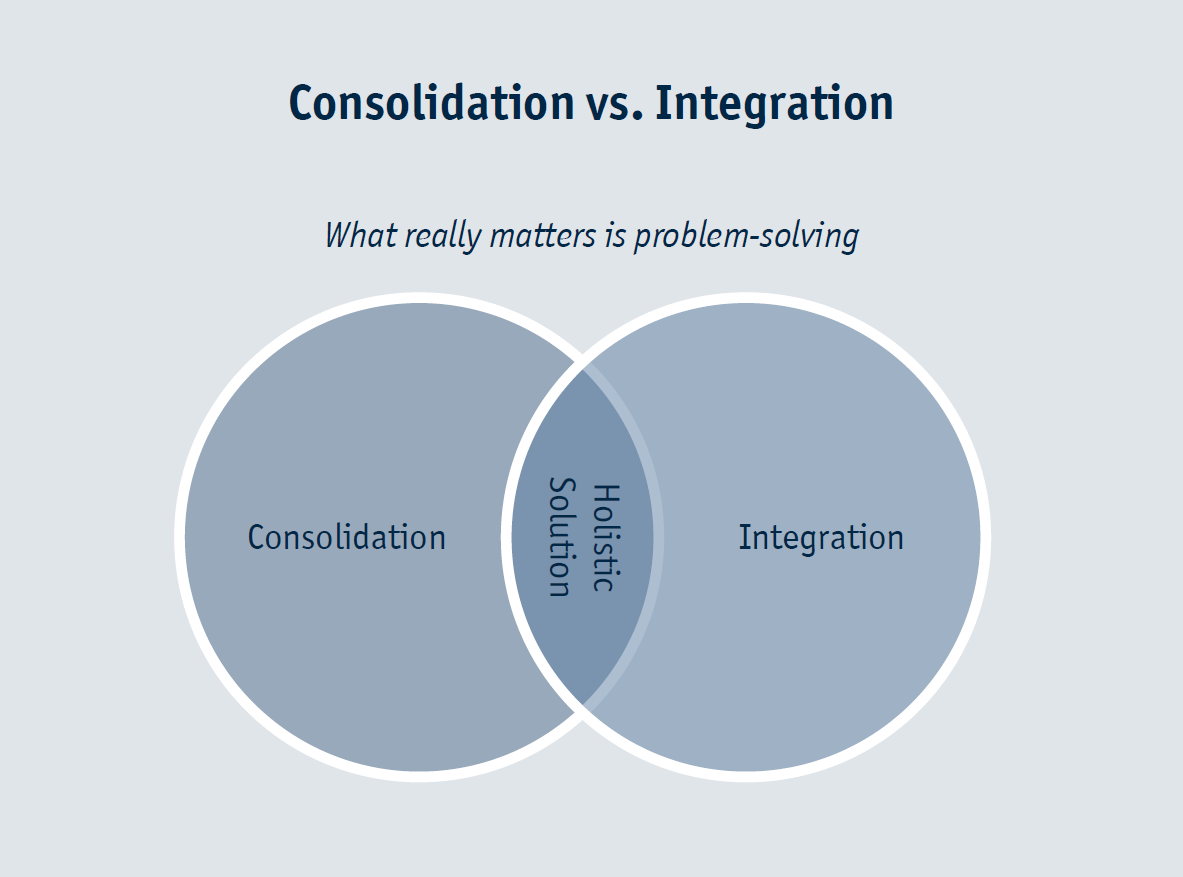
Regular posts on all things StableNet® from a sales, techie, or marketing perspective

Research & Vision
The Similarities and Differences of Consolidation and Integration
For Holistic Network and Service Management
November 4th 2021, Würzburg
Consolidation vs. Integration – The terms have more in common than you think
Let’s first take a look at a simple Venn diagram:

While I may be starting at the end of the story and working my way backwards, I’d like to start by laying out what unifies the two terms. At Infosim we like to say that, with StableNet®, we don’t sell a product but rather a solution to concrete problems associated with network and service management. This requires a strong commitment to market-oriented development. As we move closer and closer to the December 2021 release of StableNet® 11, the fruits of this commitment can be seen quite pointedly. New features are introduced like the capacity metric module and Tag Filter Query Language (TFQL), existing features are enhanced like support for telemetry devices and web portal functionality, and under-the-hood optimizations are made in programming and coding. These constant improvements are inspired by an internal vision as well as an unfathomable belief in the value of customer feedback.
Consolidation and integration certainly have more in common than we might think when we pull the words apart. They are both essential in the continual development of a solution to a problem or set of problems that our customers are facing every day. Technology itself is, by its very definition, in a constant state of flux. The Greek root of the word is a compound of techne and logia. Techne refers to the manner in which a thing is done. Logia is more concretely a word or a way of expressing thoughts and deliberations. So technology quite literally is a moving target, a process rather than a result. It is the manifestation of our evolving ability to solve problems in novel ways. Some of these problems have been around for a long time. Simple Network Management Protocol (SNMP), for example, has been around since the 80s as a way of standardizing how devices share information with each other. Other problems are newly created through innovation and improved capabilities, as typified by the explosion of IoT devices and network virtualization.
In networking, there are so-called legacy devices that have been around for decades, cloud-based solutions that are becoming more and more ubiquitous, telemetry and push-based approaches to data transmission (the list goes on and on and on) … and all of this encapsulated in a multi-vendor infrastructure with proprietary GUIs. In the end, SLAs don’t differentiate between technologies and vendors; they only measure results. Hence the Holistic Solution at the heart of the Venn diagram: this is where we place our focus and what unifies our efforts in development into a single, customer-oriented vision.
Defining Consolidation and Integration for StableNet®
Consolidate comes from the Latin word consolidare, a compound of con (together) and solidare (to make firm or solid). And indeed, we use the term metaphorically to refer to the solid base on which the solution is built. StableNet® is a consolidated software platform. Taking the metaphor further, we refer to the four main functionality categories of StableNet® as pillars. Discovery and Inventory, Configuration (NCCM), Fault, and Performance and Service are the main structures built atop the software solution, all established upon the consolidated platform.
Integrare is a verb derived from the Latin noun integer, or whole. So integrare has a strong directionality towards the outside, to create unification in the face of diversity. It is not by chance that sociologists and political theorists use the term integration as a key challenge for ethnically and culturally diverse subcultures in nation-states facing the pressures of globalization. The challenge is to find commonality while embracing diversity. And one of the key components to establishing commonality is through language, the ability to communicate with one another.
The same can be said of how integration works in network management. A consolidated platform must be able to communicate with fragmented technologies in order to unify them in a single user interface. It is, in essence, a multi-lingual system that transports and translates many languages so they can be accessed through and managed with StableNet®. By supporting and integrating multiple interfaces such as CLIs, REST APIs, etc., proprietary and fragmented software and technologies can be unified in a single system.
To summarize, the following would linguistically and conceptually be the most accurate use of the terms from our point of view:
In Conclusion

Dr. David Toumajian
Director of Marketing @ Infosim® GmbH & Co. KG
David is the Director of Marketing at Infosim® , where he is responsible for planning and implementing communications and market research strategies, as well as aligning interdepartmental initiatives. Before joining Infosim® , Dr. Toumajian was a marketing professor for many years, specializing in consumer behavior, market research methodologies and branding. He received his PhD from the University of Utah in 2005 and his M.B.A. from the Fachhochschule Reutlingen in 2000.

Software
Made in Germany
